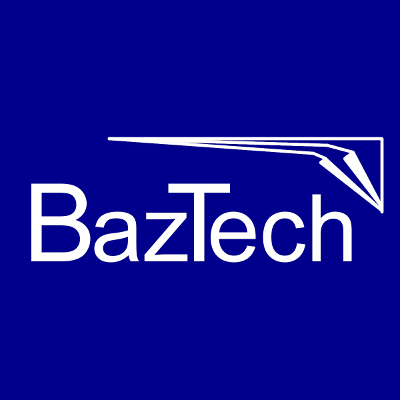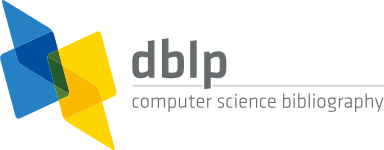| 2020 | |
| [1] | , "System performance requirements: A standards-based model for early identification, allocation to software functions and size measurement", In e-Informatica Software Engineering Journal, vol. 14, no. 1, pp. 117–148, 2020.
DOI: 10.37190/e-Inf200105. Download article (PDF)Get article BibTeX file |
Authors
Khalid T. Al-Sarayreh, Kenza Meridji, Alain Abran, Sylvie Trudel
Abstract
Background: In practice, the developers focus is on early identification of the functional requirements (FR) allocated to software, while the system non-functional requirements (NFRs) are left to be specified and detailed much later in the development lifecycle.
Aim: A standards-based model of system performance NFRs for early identification and measurement of FR-related performance of software functions.
Method: 1) Analysis of performance NFR in IEEE and ECSS standards and the modeling of the identified system/software performance functions using Softgoal Interdependency Graphs. 2) Application of the COSMIC-FSM method (e.g., ISO 19761) to measure the functional size of the performance requirements allocated to software functions. 3) Use of the COSMIC-SOA guideline to tailor this framework to service-oriented architecture (SOA) for performance requirements specification and measurement. 4) Illustration of the applicability of the proposed approach for specification and measurement of system performance NFR allocated to the software for an automated teller machine (ATM) in an SOA context.
Results: A standards-based framework for identifying, specifying and measuring NFR system performance of software functions.
Conclusion: Such a standards-based system performance reference framework at the function and service levels can be used early in the lifecycle by software developers to identify, specify and measure performance NFR.
Keywords
Non-functional requirements, (NFR) performance requirements, international standards, Softgoal Interdependency Graphs(SIGs), COSMIC-FSM, COSMIC-SOA
References
1. K.T. Al-Sarayreh, “Model of early specifications of performance requirements at functional levels,” Recent Advances on Electroscience and Computers , 2015, p. 236.
2. K. Meridji, K.T. Al-Sarayreh, A. Abran, and S. Trudel, “System security requirements: A framework for early identification, specification and measurement of related software requirements,” Computer Standards and Interfaces , Vol. 66, 2019, p. 103346.
3. A. Abran, K.T. Al-Sarayreh, and J.J. Cuadrado-Gallego, “A standards-based reference framework for system portability requirements,” Comput. Stand. Interfaces , Vol. 35, No. 4, Jun. 2013, p. 380–395. [Online]. https://doi.org/10.1016/j.csi.2012.11.003
4. K.T. Al-Sarayreh, A. Abran, and J.J. Cuadrado-Gallego, “A standards-based model of system maintainability requirements,” journal of software: evolution and process , Vol. 25, No. 5, 2013, pp. 459–505.
5. K.T. Al-Sarayreh, A. Abran, and J.J. Cuadrado-Gallego, “Measurement model of software requirements derived from system portability requirements,” in 9th International Conference on Software Engineering Research and Practice (SERP 2010) , 2010, pp. 553–559.
6. K.T. Al-Sarayreh, I. Al-Oqily, and K. Meridji, “A standard based reference framework for system adaptation and installation requirements,” in 2012 Sixth International Conference on Next Generation Mobile Applications, Services and Technologies , 2012, pp. 7–12.
7. M. Kassab, O. Ormandjieva, and M. Daneva, “An ontology based approach to non-functional requirements conceptualization,” in 2009 Fourth International Conference on Software Engineering Advances . IEEE, 2009, pp. 299–308.
8. X. Zhang and X. Wang, “Tradeoff analysis for conflicting software non-functional requirements,” IEEE Access , Vol. 7, 2019, pp. 156463–156475.
9. M. Dewi and Z. Didar, “An ontological framework to manage the relative conflicts between security and usability requirements,” in 2010 Third International Workshop on Managing Requirements Knowledge . IEEE, 2010, pp. 1–6.
10. N. Daclin, B. Moradi, and V. Chapurlat, “Analyzing interoperability in a non-functional requirements ecosystem to support crisis management response,” Enterprise Interoperability: Smart Services and Business Impact of Enterprise Interoperability , 2018, pp. 429–434.
11. L.M. Cysneiros, K.K. Breitman, C. Lopez, and H. Astudillo, “Querying software interdependence graphs,” in 2008 32nd Annual IEEE Software Engineering Workshop . IEEE, 2008, pp. 108–112.
12. K.T. Al-Sarayreh, “Dependability model for decomposition and allocation of system safety integrity levels of software quality,” International Review on Computers and Software , Vol. 10, No. 11, 2015.
13. S. Al-Qudah, K. Meridji, and K.T. Al-Sarayreh, “A comprehensive survey of software development cost estimation studies,” in Proceedings of the international conference on intelligent information processing, security and advanced communication , 2015, pp. 1–5.
14. R.E. Al-Qutaish and K.T. Al-Sarayreh, “Software process and product ISO standards: a comprehensive survey,” European Journal of Scientific Research , Vol. 19, No. 2, 2008, pp. 289–303.
15. A. Abran and K.T. Al-Sarayreh, “Standards-based model for the specification of system design and implementation constraints,” in Industrial Proceedings, 17th European Systems and Software Process Improvement and Innovation, EuroSPI 2010 Conference . Publisher: Delta, Denmark Grenoble (France), 2010, pp. 4–7.
16. R. Tawhid and D. Petriu, “Automatic derivation of a product performance model from a software product line model,” in 2011 15th International Software Product Line Conference . IEEE, 2011, pp. 80–89.
17. M. Noorian, E. Bagheri, and W. Du, “Non-functional properties in software product lines: A axonomy for classification.” in SEKE , Vol. 12, 2012, pp. 663–667.
18. A. Danylenko and W. Löwe, “Context-aware recommender systems for non-functional requirements,” in 2012 Third International Workshop on Recommendation Systems for Software Engineering (RSSE) . IEEE, 2012, pp. 80–84.
19. H.T. Jung and G.H. Lee, “A systematic software development process for non-functional requirements,” in 2010 International conference on information and communication technology convergence (ICTC) . IEEE, 2010, pp. 431–436.
20. Gyro terminology and performance specification , European Cooperation for Space Standardization Std. ECSS-E-ST-60-21C, 2017.
21. System engineering general requirements , European Cooperation for Space Standardization Std. ECSS-E-ST-10C Rev. 1, 2017.
22. Software product assurance , European Cooperation for Space Standardization Std. ECSS-Q-ST-80C Rev.1, 2017.
23. Space Engineering: Control Performance , European Cooperation for Space Standardization Std. ECSS-E-ST-60-10C, 2008.
24. Space engineering, Stars sensors terminology and performance specification , European Cooperation for Space Standardization Std. ECSS-E-ST-60-20C Rev.2 DIR1, 2017.
25. Satellite attitude and orbit control system (AOCS) requirements , European Cooperation for Space Standardization Std. ECSS-E-ST-60-30C:, 2013.
26. Recommended Practice for Software Requirements Specifications , Institute of Electrical and Electronics Engineers Std. 830-1998, 1998.
27. L. Mo, S. Zhigang, H. Quan, Y. Guizhi, L. Ya, and S. Fengli, “Analysis and testing of key performance indexes of vxworks in real-time system,” in 2018 19th IEEE/ACIS International Conference on Software Engineering, Artificial Intelligence, Networking and Parallel/Distributed Computing (SNPD) . IEEE, 2018, pp. 369–374.
28. A. Ahmad, N. Abdulrahman, B. Sascha, J. Naoum, and T. Klaus, “Toward a performance requirements model for the early design phase of IT systems,” in 2018 Sixth International Conference on Enterprise Systems (ES) . IEEE, 2018, pp. 9–16.
29. Z. Chen, T. Zhao, J. Jiao, and H. Wu, “Availability analysis of multi-state weighted k-out-of- n systems with component performance requirements,” in 2018 Annual Reliability and Maintainability Symposium (RAMS) . IEEE, 2018, pp. 1–5.
30. K.T. Al-Sarayreh, I. Ibrahim Al-Oqily, and K. Meridji, “A standard-based reference framework for system operations requirements,” International Journal of Computer Applications in Technology , Vol. 47, No. 4, 2013, pp. 351–363.
31. J. Kai, X. Ling, and Z. Huamin, “A parameter tuning method of proportional integral controller for the first-order plus delay time system based on the desired dynamical performance,” in Proceeding of the 11th World Congress on Intelligent Control and Automation . IEEE, 2014, pp. 6110–6115.
32. K. Arun and A. Sunil, “Statistical analysis of memory and performance non functional requirements in real time embedded system development for agile methodology,” in 2015 International Conference on Industrial Instrumentation and Control (ICIC) . IEEE, 2015, pp. 300–305.
33. I. Vila, J. Perez-Romero, O. Sallent, A. Umbert, and R. Ferrus, “Performance measurements-based estimation of radio resource requirements for slice admission control,” in 90th Vehicular Technology Conference (VTC2019-Fall) . IEEE, 2019, pp. 1–6.
34. M. Anish, R. Anand, R. Srivaths, and J. Niraj, “Automated energy/performance macromodeling of embedded software,” IEEE Transactions on Computer Aided Design of Integrated Circuits and Systems , Vol. 26, No. 3, 2007, pp. 542–552.
35. Software measurement – Functional size measurement Part 1: Definition of concepts , ISO/IEC Std. 14143-1, 1998.
36. COSMIC v 3.0 – A Functional Size Measurement Method, I , ISO/IEC Std. 19761, 2003.
37. P. Fagg, A. Lesterhuis, G. Rule, G. Ungerer, K. Galegaonkar, S.and Natarajan, L. Santillo, F. Vogelezang, P. Jain, M. O’Neill, and C. Symons, “Guideline for sizing SOA software,” The Common Software Measurement International Consortium (COSMIC), Tech. Rep., 2010.
38. L. Santillo, “Seizing and sizing SOA applications with COSMIC function points,” Proceedings of SMEF , 2007.
39. E. Marks, Service-oriented architecture governance for the services driven enterprise . John Wiley and Sons, 2008.
40. L. Chung, B. Nixon, and E. Yu, “Dealing with change: An approach using non-functional requirements,” Requirements Engineering , Vol. 1, No. 4, 1996, pp. 238–260.
41. L. Chung, B. Nixon, E. Yu, and J. Mylopoulos, Non-functional requirements in software engineering . Springer Science and Business Media, 2012, Vol. 5.
42. K. Hemenway, M. Iff, and T. Calishain, Spidering Hacks: 100 Industrial-Strength Tips and Tools . ” O’Reilly Media, Inc.”, 2004.
43. I. Lee, J. Leung, and S. Son, Handbook of real-time and embedded systems . CRC Press, 2007.
44. K.T. Al-Sarayreh, L.A. Hasan, and K. Almakadmeh, “A trade-off model of software requirements for balancing between security and usability issues,” International Review on Computers and Software , Vol. 10, No. 12, 2016, pp. 1157–1168.
45. C.M. Kozierok, The TCP/IP guide: a comprehensive, illustrated Internet protocols reference . No Starch Press, 2005.
46. A. Abran and K. Meridji, “Analysis of software engineering from an engineering perspective,” European Journal for the Informatics Professional , Vol. 7, No. 1, 2006, pp. 46–52.
47. K. Meridji, K.T. Al-Sarayreh, and A. Al-Khasawneh, “A generic model for the specification of software reliability requirements and measurement of their functional size,” International Journal of Information Quality , Vol. 3, No. 2, 2013, pp. 139–163.
48. J. Carr, The technician’s radio receiver handbook: wireless and telecommunication technology . Elsevier, 2001.
49. J.J. Parsons and D. Oja, New Perspectives on Computer Concepts 2014: Comprehensive . Cengage Learning, 2013.
50. B. Parkinson and J. Spilker, “Progress in astronautics and aeronautics: Global positioning system: Theory and applications. american institute of aeronautics/astronautics,” 1996.
51. H. El-Rewini and M. Abd-El-Barr, Advanced computer architecture and parallel processing . John Wiley and Sons, 2005, Vol. 42.
52. K.T. Al-Sarayreh and A. Abran, “Specification and measurement of system configuration non functional requirements,” in 20th International Workshop on Software Measurement and International Conference on Software Measurement, IWSM/Metrikon/Mensura, Stuttgart, Germany , 2010, pp. 141–156.
53. A. Abran and K.T. Al-Sarayreh, “Non-functional requirements and their sizing with cosmic: Practitioner’s guide,” in COSMIC Gruop , 2020, pp. 1–14.
54. W. Claes, P. Runeson, M. Höst, M. Ohlsson, B. Regnell, and A. Wessln, Experimentation in software engineering . Springer Science and Business Media, 2012.








